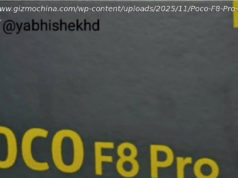We checked out Indiana Jones and the Great Circle at a recent remote presentation, coupled with a developer Q&A with MachineGames.
During a pre-Gamescom 2024 remote briefing event held by Bethesda, we learned more about Indiana Jones and the Great Circle through a remote presentation and subsequent roundtable Q&A with two key developers: Game Director Jerk Gustafsson and Creative Director Axel Torvenius.
This time, the developers at MachineGames focused on showing off gameplay: how Indiana interacts with the world around him, how he traverses the environment, and how he deals with the enemy. They also highlighted some of his key tools: the camera and journal.
The developers claimed to have made the gameplay experience as interesting and authentic as possible. They described Indiana Jones and the Great Circle as a game rich with detail, intriguing environments, and hidden secrets, evoking a sense of curiosity. For the temples of Sukhothai, they studied photographs and drawings from early expeditions to imagine what these temples actually looked like. Back then, they were much more overgrown, hidden away in the wilderness, and, of course, less renovated and reconstructed.
Throughout the game, players will encounter several well-guarded secrets and hidden ruins, such as the Sunsparker Chamber, a mysterious underground temple where an ancient artifact of great value can be found. This space was forged with forgotten techniques by builders that have since fallen into oblivion.
The game was designed around the charm and resourcefulness of the heroes, Indiana and his Italian journalist companion, Gina. This race for answers will take players to ancient crypts, lost civilizations, and much more. The focus of this game is adventure. MachineGames wants exploration to feel truly rewarding with all of Indy’s tools, and it’s up to players to find clever and even unexpected uses for each of them.
That includes Indy’s camera. Snapping photos may reveal historical insights and important clues. Similarly, the journal acts as a complete guide. It starts as a blank slate but becomes a detailed archive of the journey with maps, photos, and letters. It’s a reminder of where Indiana has been and, for the sharp observer, a hint about where to head next.
The developers also discussed finer aspects of gameplay. Sometimes, Indiana will have to enter restricted areas; that’s where disguises come in. Borrowing familiar mechanics seen in many games, players should keep far from those enemies with a sharp eye for spotting trespassers. Of course, the game features the whip, arguably Indy’s most important tool. It’s a powerful weapon in combat and a crucial tool for traversing lost ruins.
The key to the game’s combat is carefully choosing the right approach. It is possible to outsmart enemies by stealth and smartly using the environment, such as picking up a nearby object to distract, stun, or subdue enemies while remaining unnoticed. In a brawl, Indiana must stand his ground with powerful combos, blocks, and defensive parries. Melee combat was designed to look and feel exciting. Precisely timing and mixing these moves is critical to landing a knockout combo or classic finisher, and these brawling skills can be seamlessly combined with the whip, revolver, and anything else within reach for creative combat.
Just like Indy, players will navigate buried tombs and activate forgotten puzzles while avoiding deadly traps. Clues from the journal, traversal, and decryption are just a few things you’ll need to figure out the solutions. Every puzzle was designed to fit seamlessly into the world, ranging from smaller challenges, hidden and forbidden secrets, to epic obstacles leading to greater mysteries.
As players complete missions in Indiana Jones and the Great Circle, they’ll earn adventure points to expand Indy’s skillset. There will be dozens of upgrades that let you customize his abilities to your playstyle; for example, the ability called True Grit gives Indy an extra chance to come back from a fatal blow.
The developers also explained that players are encouraged to take off the main path and uncover new missions, mysteries and secrets. The game’s open areas provide the freedom to find your own adventures. Exploring with a keen eye is essential to making discoveries. The authentic locations set in 1930s you visit have a clear goal driving the story forward, but the team hopes players always feel enticed to explore the world and discover the many secrets lurking around every corner.
As a reminder, the game is officially scheduled to launch on PC and Xbox Series S|X this year (although a rumor suggests a PS5 version might be released in 2025).
In terms of the game’s timeline, where does it take place?
Axel Torvenius: It is set near 1937, after the Raiders of the Lost Ark movie, and it takes place a fairly short amount of time just after that movie is set in the timeline.
We saw adventure points pop up when Indy snapped photos. How are these used in Indiana Jones and the Great Circle?
Jerk Gustafsson: We have something in the game that we call adventure books. Those are items that you find in the world for exploration and playing the game, completing activities and missions. Also, through just exploration and discovery, you will be rewarded with adventure points. Each adventure book contains a skill, and you can use these points to unlock the skills. It’s pretty straightforward, but we think it really works well for this type of game.
Can you talk more about how the journal and the camera work?
Jerk Gustafsson: So, the journal is one of the core tools we have in the game. We like to see the journal as this guide that documents your journey from the very start to the end. Everything you do is basically documented in this journal throughout, and the camera plays a big part in that because we use the camera to take photos, and those photos you take are also added to your journal. The camera is also a very useful tool for solving puzzles because we use it a lot for taking photos for clues and additional information, and also for hints to solve puzzles. Everything is very connected and works well together, so we are quite happy with the results.
What was the process/challenge of transitioning from Wolfenstein to Indiana Jones?
Jerk Gustafsson: I think I will take that one as well. It’s actually a very good question because I’ve been thinking about it a little bit more lately, actually because we could see it on the team as well, that the step from going from what we are so used to doing with these pretty guns blazing, crazy shooting experience that we have done to something that is much more lighthearted, much more matinee in many ways, has been a pretty big step but also very fun. It has taken some time to do that transition for sure. But it’s something that I think has been very refreshing for the team and the studio. It’s been fun to work in many different ways.
How has the team worked to capture the comedy of the film series to make Indiana Jones and the Great Circle feel authentic to the franchise?
Axel Torvenius: A lot of focus has been going on specifically trying to analyze and look at the tone and the beats, specifically from the older movies, and we’ve been trying to dissect and pick out the cherries in terms of making sure that the comedy the tone and that whole vibe is translated into the game experience in several different ways.






